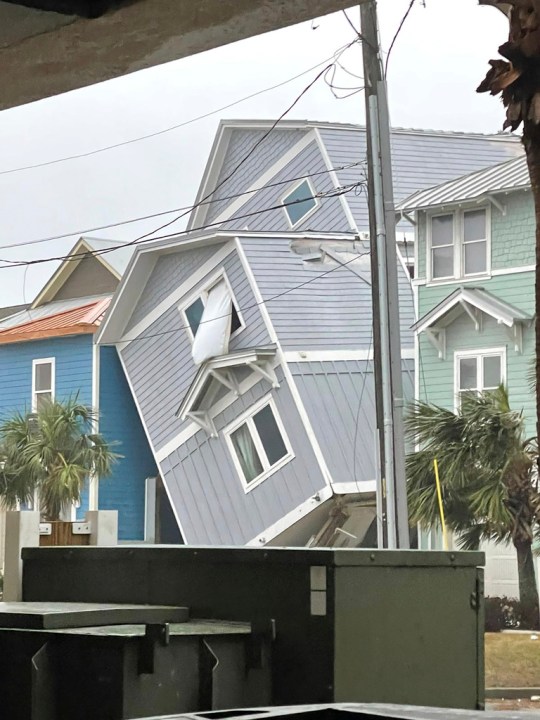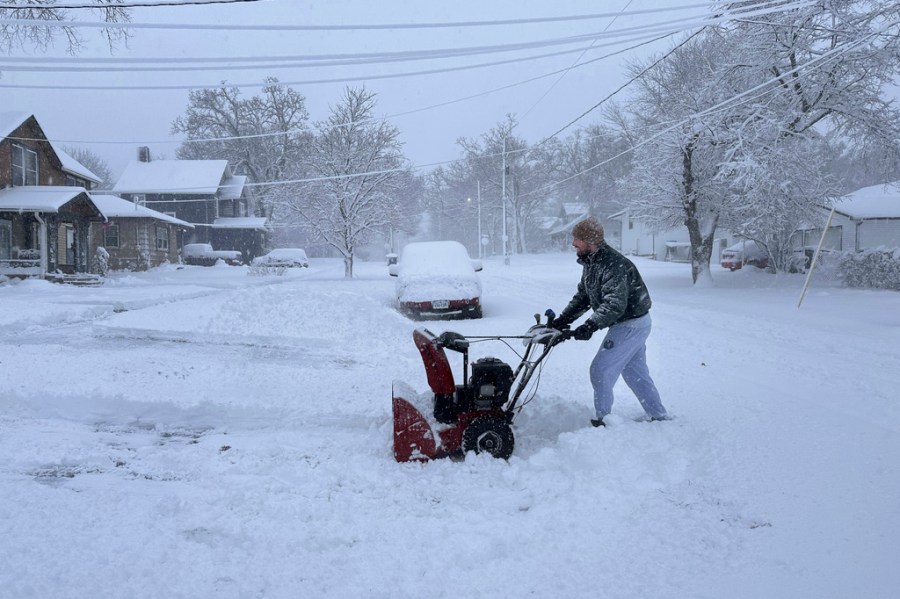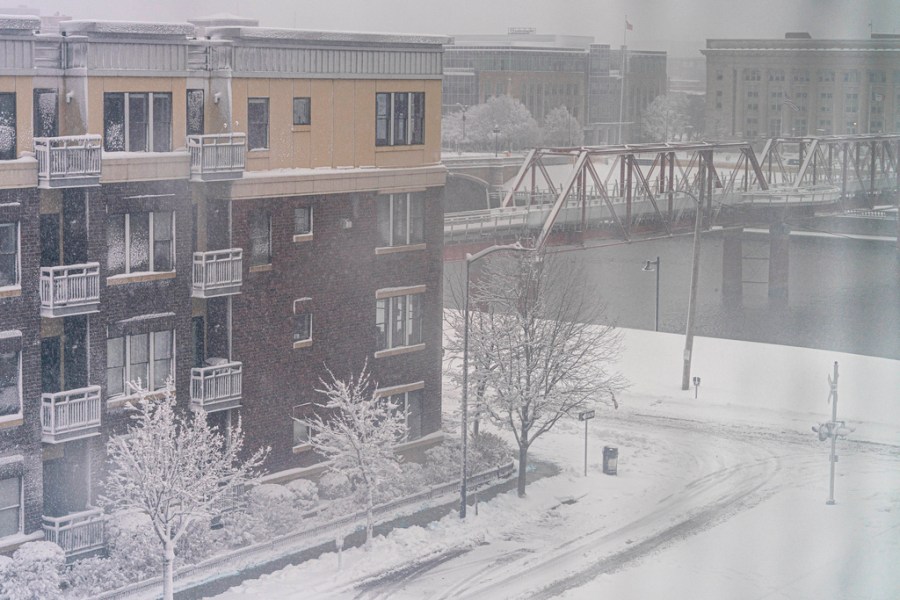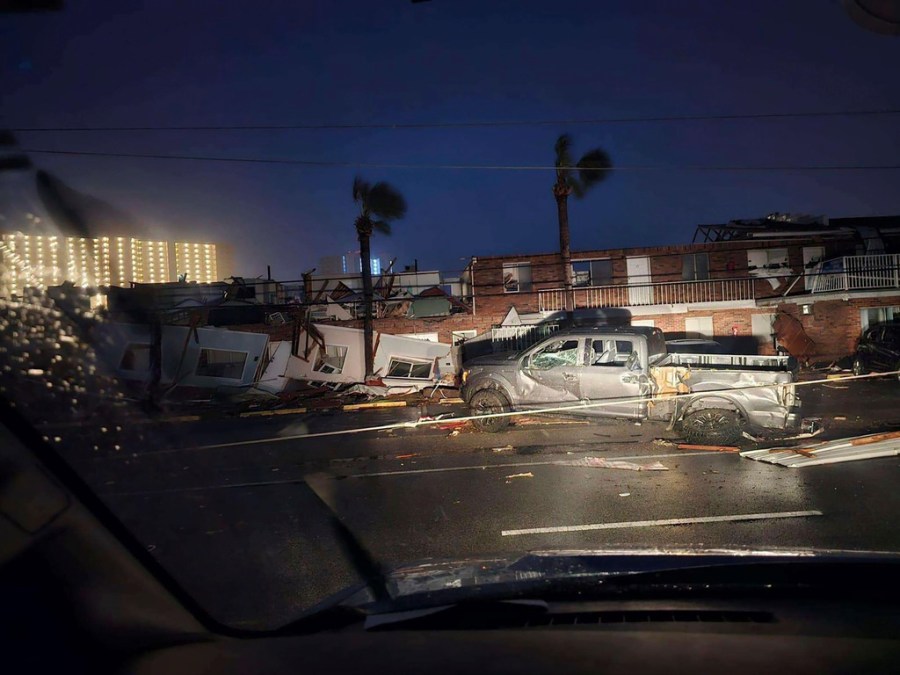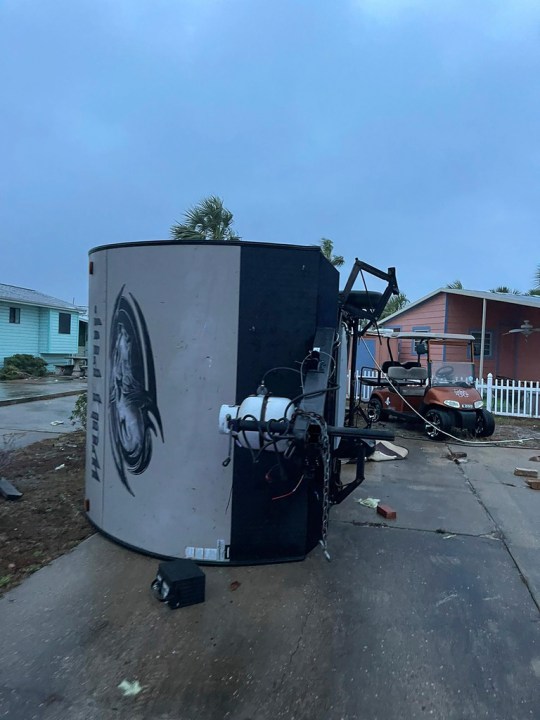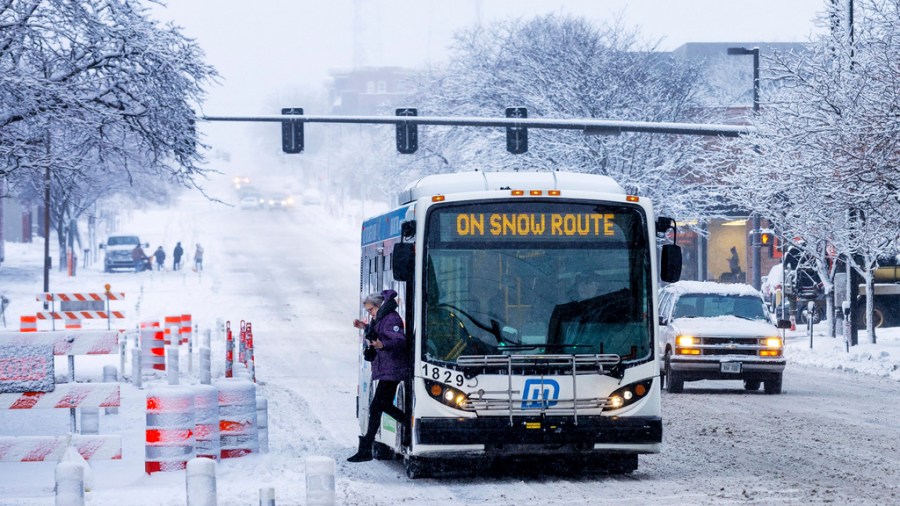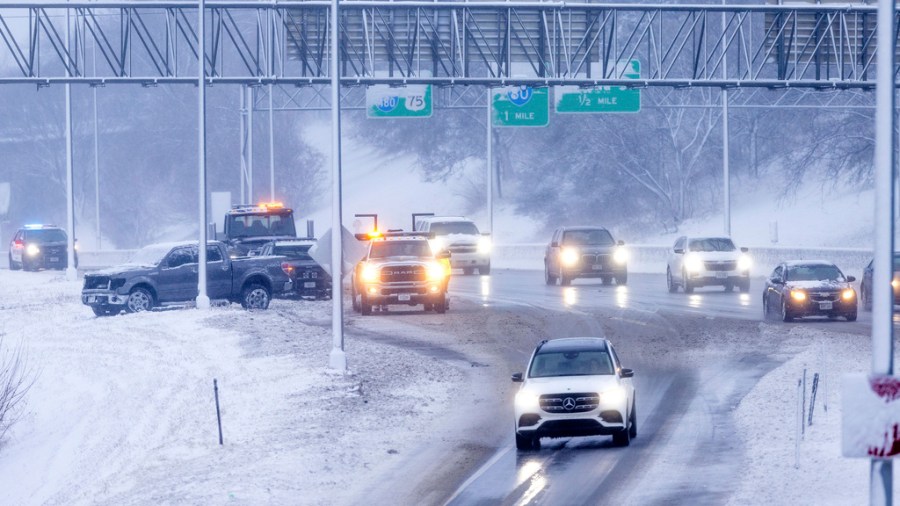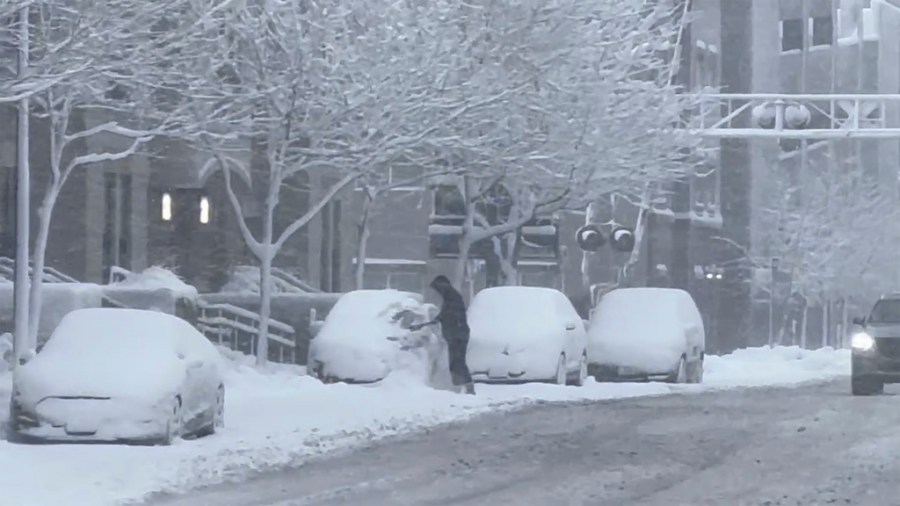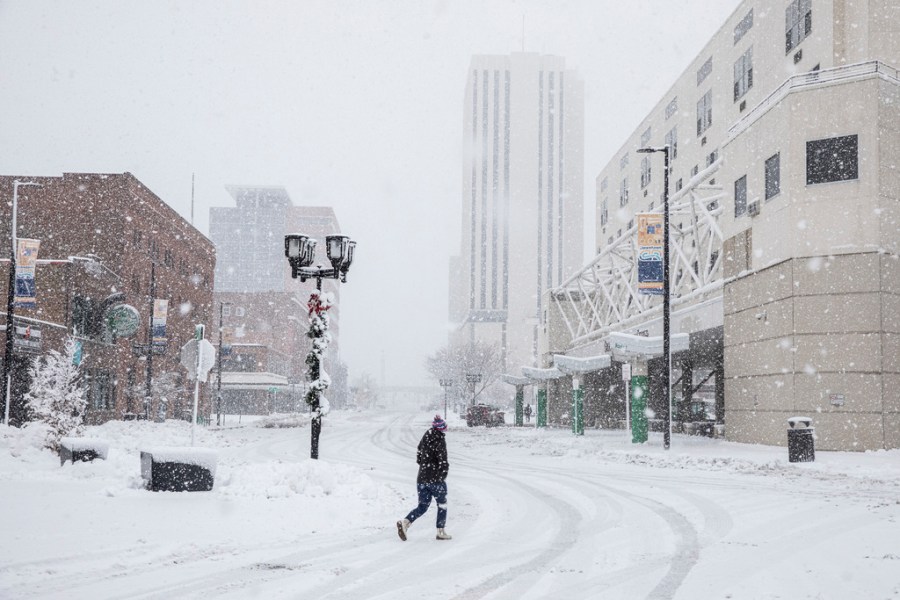Polar vortex cold looms as U.S hammered by dangerous winter weather
(NEXSTAR) – After a largely mild end to 2023, cold jet stream air from the polar vortex appears set to descend on parts of the U.S. later this week, adding to a chaotic January that saw reports of several deaths, heavy snow and tornadoes Tuesday.
The polar vortex refers to the frigid air that flows counter-clockwise around the North Pole, some 15 to 30 miles above the Earth. While the vortex is always there, it strengthens during the winter.
Sometimes, however, large atmospheric waves or warm temperatures can weaken the polar vortex, upsetting the stable jet stream rotation and pushing icy air southward, while warmer air is drawn up to the Arctic.
“Last week, there was a minor disruption of the polar vortex (the vortex winds didn’t fully reverse direction to make it a “major” event), which may help increase chances for cold air outbreaks over the East Coast of the U.S. and Europe in particular for the next 10-12 days,” Amy Butler, an atmospheric scientist at the National Oceanic and Atmospheric Administration, told Nexstar in a statement.
Butler wrote Tuesday that the stratospheric polar vortex “is now stretching down across North America,” potentially bringing the frigid air from the polar jet stream with it to the central US.
Cleveland residents, for instance, are already bracing for cold after a high pressure system originating north of the Arctic Circle interacted with the Himalayas.
“This interaction caused a ripple effect that cascaded into the upper atmosphere,” said WJW meteorologist Scott Sabol. “This aided in disrupting the polar vortex and weakening the jet stream. Extreme warming (called stratosphere warming) at the very top of the atmosphere displaced the polar vortex and the jet stream.”
Sabol expects temperatures to drop Saturday night into Sunday with the frigid air potentially sticking around for a few weeks.
Butler says directly attributing the cold forecast for the Midwest to the polar vortex is still tricky, however, adding that polar vortex changes “may help ‘load the dice’ for cold air outbreaks but many elements must come together for weather extremes to occur.”
By early next week, models show bone-chilling cold settling across much of the U.S. “It looks like it reaches its peak early next week in the central US and then bleeds a bit east, but the brutal cold looks like it avoids the big cities along the East Coast,” said WSYR‘s Dave Longley.
As for the rest of the winter during this El Nino year, Butler said there are some scenarios in which the polar vortex could see further destabilization during January, but, after mid-month, long-term forecasts are uncertain.
Storms wreaks havoc in the South, Midwest
A sprawling storm hit the South with tornado warnings and high winds that blew roofs off homes, flipped over campers and tossed about furniture in Florida on Tuesday. Another storm brought cities across the Midwest to a standstill with more than half a foot of snow, stranding people on highways as it headed to the Northeast.
At least three deaths in the South were attributed to the storm, where 55 mph winds and hail moved through the Florida Panhandle and into parts of Alabama and Georgia by sunrise Tuesday, along with at least several reports of radar-confirmed tornadoes, the National Weather Service said. A wind gust of 106 mph was recorded before dawn near the coast in Walton County, Florida.
Near Cottonwood, Alabama, a small city near the Georgia and Florida borders, 81-year-old Charlotte Paschal was killed when her mobile home was tossed from its foundation, the Houston County coroner said. A suspected tornado had touched down in the area.
Police in Clayton County, south of Atlanta, say a man died during heavy rain when a tree fell on his car on a state highway in Jonesboro.
Storm-related injuries were reported in Florida, but no deaths. A section of Panama City Beach, Florida, showed parts of roofs blown away, furniture, fences and debris strewn about and a house that appeared tilted on side, leaning on another home.
In Panama City, about 10 miles away, police early Tuesday asked residents to stay indoors and off the roads “unless absolutely necessary” as officers checked on damage from the storms, including downed power lines and trees.
The city is in Bay County, where there had been multiple reports of tornadoes on the ground, Sheriff Tommy Ford said in a brief Facebook Live post.
“We’ve rescued people out of structures,” he said.
The National Weather Service office in Tallahassee is planning to send out three tornado survey teams on Wednesday and two more on Thursday. The three teams on Wednesday will assess suspected tornado damage in Walton, Bay and Jackson counties in Florida. The two teams on Thursday will assess damage in Houston County, Alabama and Calhoun County Georgia.
Meanwhile, in the Midwest, where a snowstorm started Monday, up to 12 inches of snow could blanket a broad area stretching from southeastern Colorado all the way to the Upper Peninsula of Michigan. That includes western Kansas, eastern Nebraska, large parts of Iowa, northern Missouri and northwestern Illinois, said Bob Oravec, a forecaster with the National Weather Service in College Park, Maryland.
In parts of Arizona, a cold front brought below-freezing temperatures early Tuesday, with the National Weather Service reporting a minus-17 reading at the Snow Bowl in northern Arizona. In northeastern New Mexico, the state Department of Transportation said snow plows spent hours Monday afternoon clearing U.S. Highway 56 to free more than 25 stranded vehicles.
From the Midwest, the storm was expected to head east, bringing a combination of snow, rain and strong winds to the Northeast by Tuesday night, as well as concerns about flooding in areas such as New England, parts of which got more than a foot of snow Sunday.
The Associated Press contributed to this report.
Copyright 2023 Nexstar Media Inc. All rights reserved. This material may not be published, broadcast, rewritten, or redistributed.

